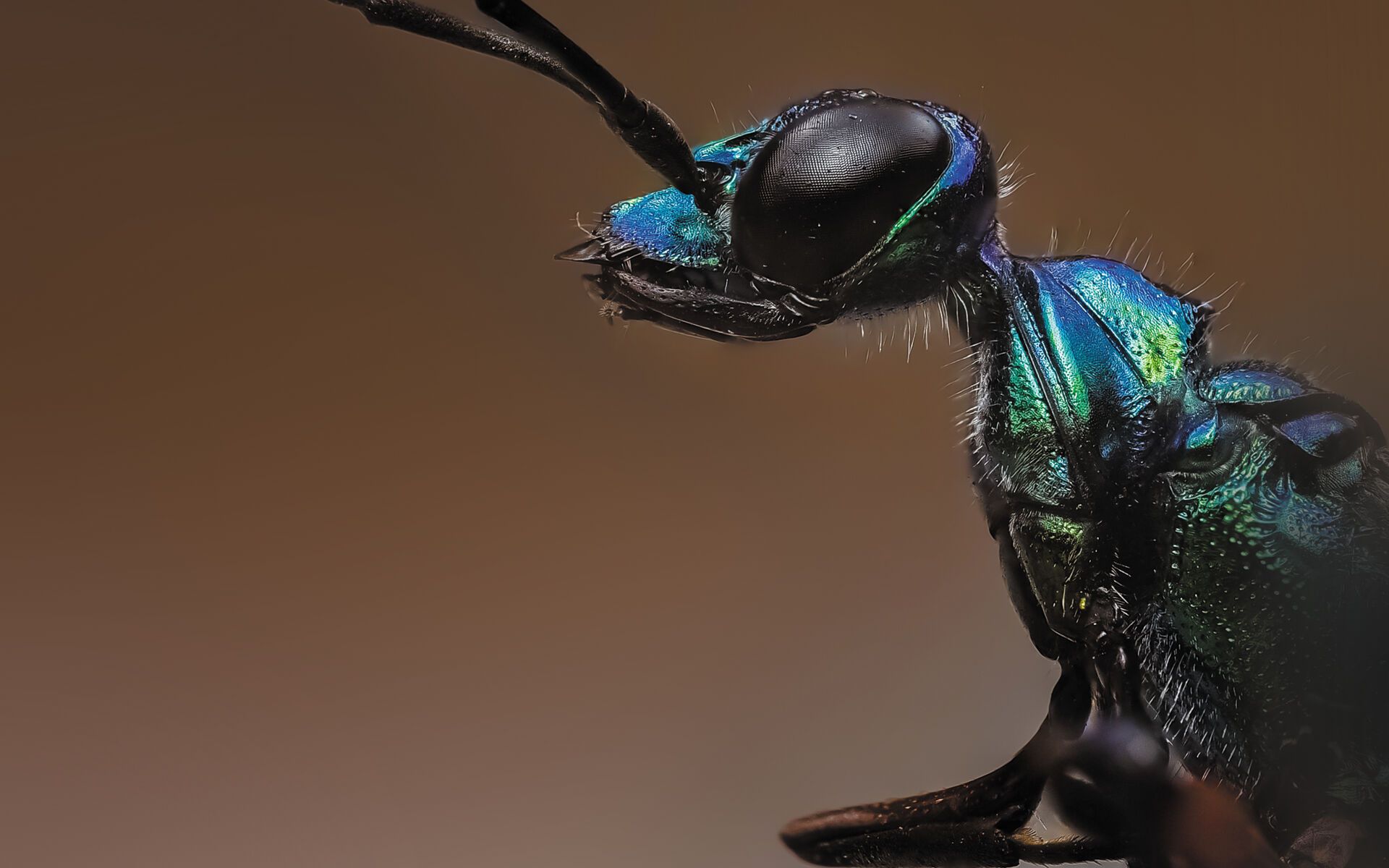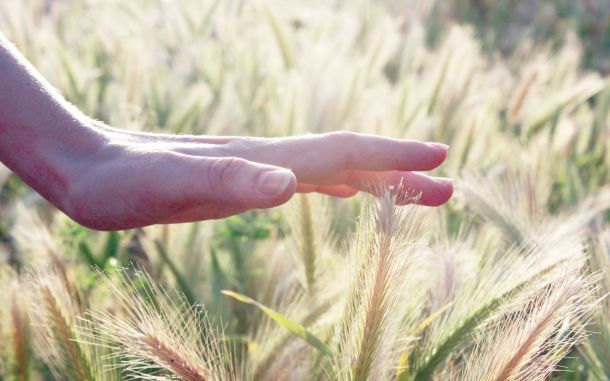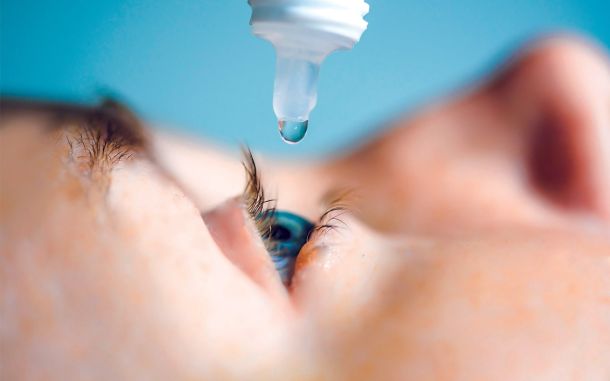What Wasps Can Teach Us About Hygiene

In This Article
-
The emerald cockroach wasp has a unique reproductive strategy: immobilize and manipulate a prey, and use it as a food source for its larvae.
-
Wasp larvae use specialized secretions to protect themselves from potentially harmful microbes within their host cockroach, potentially providing insights into the development of novel antimicrobial agents.
-
While it is noted that this antibacterial secretion is a specialized mixture acting as a first line of defense against a variety of bacteria, viruses and fungi, the question of how the mindless wasp can devise such a complex chemical defense and reproduction strategy remains unanswered.
People have different tastes when it comes to food. Some like it hot while others dote on sour things. Still, others opt for mixing hot food with dessert. Similarly, the wasp also has a very striking palate. Dr. Gudrun Herzner from the University of Regensburg, Germany, and his team conducted research on wasp and cockroaches and came up with some interesting information on food and hygiene [1].
Cockroaches on the menu
The animals that feed on cockroaches face serious risks, as their preys may contain various microbes in their tissues or bodies, due to their living conditions. Among the animals with unique and curious tastes that fall into this risk category are wasps. Actually, it is not the wasp itself, but its larva, that has a stunning palate.
Both males and females of the emerald cockroach wasp Ampulex compressa have similar characteristics with other species in their family. Yet, female wasps of this species resort to a mind-boggling process for reproduction. As written in their genetic codes, the female wasp first selects a cockroach that will serve as a source of easy food for its larvae.
A surgery of its own
The wasp's first move is to sting the belly or neck of the cockroach, injecting a specialized blend of venom produced in its glands. The first injection partially paralyzes the cockroach, allowing it only to bend its legs. As a result, the insect is immobilized and unable to flee and, more importantly, its head movement is impeded. Before comprehending the situation, the cockroach receives a second injection directly into a special area of its brain.
Despite its typical response of fleeing from danger or risk, the cockroach appears to challenge the wasp while under the influence of the venom. This seemingly courageous act is not due to the insect's bravery; scientists have discovered that the wasp's venom suppresses the activity of octopamine, a neurotransmitter. As a result, the insect loses its capacity for complex voluntary movements, but it can still be guided in a certain direction.
One might wonder: Would the venom, with its unique composition, produce the same effect if injected into another part of the cockroach? Painstaking studies on this matter revealed that the wasp's sting precisely targets a specific section of the brain by penetrating the chitin shell. Similar to a surgeon using laparoscopy in surgery, the wasp uses the hairy sensors located on both sides of its sting to pinpoint the target area in the prey's brain. It maneuvers the sting in various directions until it reaches a relatively narrow region of the brain containing the motor neurons. Once the venom is precisely delivered to the targeted part of the brain, it loses its ability to execute complex movements that rely on brain and neural coordination, such as walking and running. Simultaneously, it transforms into a zombie, capable of movement only under external influence. With mind-blowing guidance, the wasp seizes the cockroach’s antenna and steers it towards its nest, akin to a handler guiding a horse with reins. This method allows the wasp to avoid the cumbersome task of transporting the weighty burden of the cockroach, which will serve as both nourishment and a cradle for its larvae. Is it possible for a wasp, devoid of scientific knowledge and comprehensive consciousness, to carry out these intricate processes independently?
As the complex mechanism culminates, the enigmatic climax of a cinematic saga unfolds, featuring the female wasp.
"Mom, feed me fresh meat"
The female wasp completes its duty by delicately situating its larva on the belly of the paralyzed cockroach. It then proceeds to seal the nest using small stones, crafting a home that will cater to the needs of the larva and provide it with sustenance until it matures into a fully-fledged wasp. Roughly three days after the larva is deposited, the paralytic impacts of the chemical blend in the cockroach's brain begin to diminish. However, it is now compelled to serve a profound purpose. During this period, the larva of the wasp consumes the nutritious internal organs of the cockroach, akin to the richness of breast milk in terms of nutrients. Surprisingly, the cockroach remains alive throughout this process. Who imparts the knowledge to the ignorant wasp larva on what and how to consume? The larva gradually feeds on the fresh bounty provided for about a week. Once it has devoured all the cockroach's internal organs, the emptied chitinous exoskeleton of the cockroach serves as a dwelling for the larva, within which it begins to construct a cocoon. Upon completing its transformation inside the cocoon, the wasp emerges as an adult.
A lesson on hygiene
Upon hatching, the wasp larva infiltrates the cockroach's body, which presents an incredibly hostile environment. Teeming with spoilage and potentially pathogenic microorganisms, cockroaches typically inhabit unsanitary conditions, leaving them susceptible to various digestive and pathogenic bacteria, fungi, and viruses. The question remains: how does the wasp larva manage to survive amidst such conditions? Dr. Herzner from the University of Regensburg in Germany found inspiration in this query. Together with his team, Herzner devised a unique experiment that involved comparing the microorganisms found on a regular cockroach with those on the tissues of a cockroach harboring parasitic wasp larvae, meticulously monitoring the larval stages throughout.
Special sauce on the menu
The scientists aimed to uncover the defensive strategy employed by the larvae against the microbes within their hosts. For this purpose, they closely monitored 8-day-old larvae within their hosts through small apertures in the abdominal cuticle. The researchers observed that the larvae secreted oral fluids before feeding on their living hosts. They noticed that the larvae deposited clear droplets of secretion on the host's tissue and then spread them across the surface.
It seemed as though the larvae were adding a special sauce to the fresh meat, perhaps to make it more delectable. Dr. Herzner and his research team, driven by curiosity, subjected the secreted droplets as well as other liquids to a specialized analysis method. The comparative chemical analysis conducted on substances extracted from parasitized and healthy cockroaches uncovered two compounds: an isocoumarin derivative called mellein and micromolide. If the larvae weren't producing these secretions for the purpose of aiding in the digestion of the fresh meat, one might wonder why they excrete droplets containing mellein and micromolide. Could it be possible for inanimate atoms to combine and generate such complex molecules independently, without any knowledge of the needs of the wasp larvae? The initial hypothesis put forth by the research team was that the oral secretions from the larvae function as a protective measure against the microbes within their hosts. To investigate this proposition, the researchers devised a nutrient-rich broth medium conducive to the growth and proliferation of microbes. They discovered that the addition of mellein and micromolide to the broth medium inhibited the growth of isolated Gram-negative S. marcescens and Gram-positive S. hyicus, which are known to propagate rapidly in this medium and cause intestinal ailments [2].
The study indicated that wasp larvae use a perfect antibacterial mixture against many lethal microbes present in the organs and tissues of their host cockroaches. While it is noted that this antibacterial secretion is a specialized mixture acting as a first line of defense against a variety of bacteria, viruses and fungi, the question of how the mindless wasp can devise such a complex chemical defense and reproduction strategy remains unanswered [3].
Given humanity's response to the COVID-19 pandemic, the research conducted by Dr. Herzner and his colleagues may herald a new era in food and body hygiene, potentially leading the development of novel antimicrobial cleaning agents in the near future.
The nature is an amazing book spread before our eyes so we can study and be filled with amazement. Everything, even those as small as cockroaches or wasps, intrigue us to do more research and contemplate on the One who created them.
Notes
- "Direct Injection of Venom by a Predatory Wasp into Cockroach Brain", www.bgu.ac.il/life/Faculty/Libersat/pdf/JNB.2003b.pdf
- "Larvae of the parasitoid wasp Ampulex compressa sanitize their host, the American cockroach, with a blend of antimicrobials", PNAS, (Proceedings of The National Academy Sciences of The USA), Jan 7, 2013, www.ncbi.nlm.nih.gov/pmc/articles/PMC3557021/
- Ibid.









